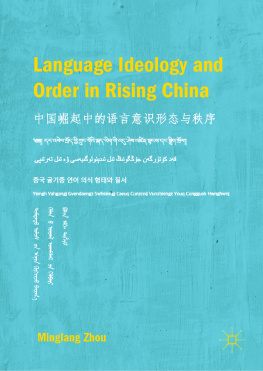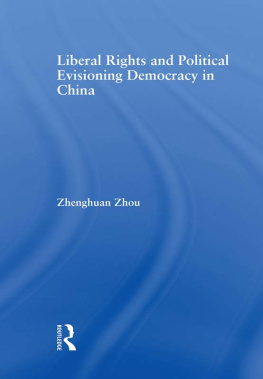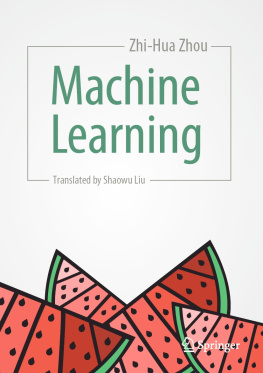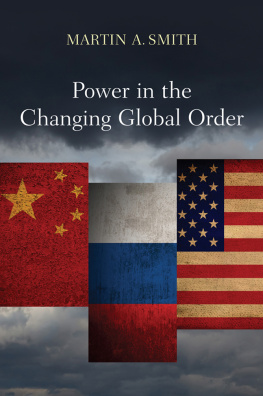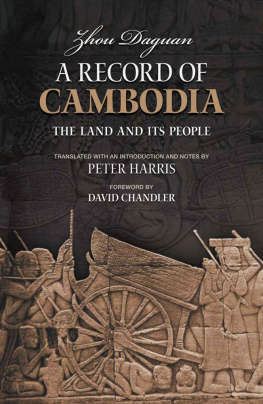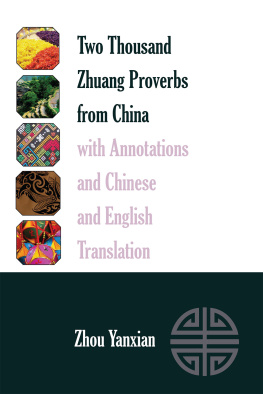Minglang Zhou - Language Ideology and Order in Rising China
Here you can read online Minglang Zhou - Language Ideology and Order in Rising China full text of the book (entire story) in english for free. Download pdf and epub, get meaning, cover and reviews about this ebook. year: 2018, publisher: Springer Singapore, genre: Home and family. Description of the work, (preface) as well as reviews are available. Best literature library LitArk.com created for fans of good reading and offers a wide selection of genres:
Romance novel
Science fiction
Adventure
Detective
Science
History
Home and family
Prose
Art
Politics
Computer
Non-fiction
Religion
Business
Children
Humor
Choose a favorite category and find really read worthwhile books. Enjoy immersion in the world of imagination, feel the emotions of the characters or learn something new for yourself, make an fascinating discovery.
- Book:Language Ideology and Order in Rising China
- Author:
- Publisher:Springer Singapore
- Genre:
- Year:2018
- Rating:4 / 5
- Favourites:Add to favourites
- Your mark:
- 80
- 1
- 2
- 3
- 4
- 5
Language Ideology and Order in Rising China: summary, description and annotation
We offer to read an annotation, description, summary or preface (depends on what the author of the book "Language Ideology and Order in Rising China" wrote himself). If you haven't found the necessary information about the book — write in the comments, we will try to find it.
Language Ideology and Order in Rising China — read online for free the complete book (whole text) full work
Below is the text of the book, divided by pages. System saving the place of the last page read, allows you to conveniently read the book "Language Ideology and Order in Rising China" online for free, without having to search again every time where you left off. Put a bookmark, and you can go to the page where you finished reading at any time.
Font size:
Interval:
Bookmark:


Cover illustration: [Nadine Westveer/EyeEm]
This Palgrave Macmillan imprint is published by the registered company Springer Nature Singapore Pte Ltd.
The registered company address is: 152 Beach Road, #21-01/04 Gateway East, Singapore 189721, Singapore
Dedicated to
Ping Fu and Daoyou for their inspirations and encouragement
A few years ago, I was invited to a banquet honoring a distinguished Chinese scientist. The honoree was an accomplished researcher in his field, but he was also urbane and well-read in the humanities, and after the dinner, he gave a short talk. Unlike English and other Western languages, he began, the Chinese language does not change over time. He went on: I know, because I speak the very same language as Confucius, from 2500 years ago. He had our attention.
To be sure, our guest that evening was not a professional linguist. But he was philologically sophisticated, a fluent reader of languages East and Westmost notably and proudly, of course, of Classical Chinese. And with his talk that evening, our scientist showed starkly how much the Chinese writing system overshadows and is confused with the spoken language, perhaps especially so among the highly educated.
Zhou Minglang has written a work of a different kind. His book focuses not on Chinese characters and their use, but squarely on what is actually spoken in China today, the extraordinary variety of Chinese speech, and the political and social issues affecting Chinas linguistic future. Issues of writing and literacy take their place in that context (and mostly are covered only in parts of Chapter ) rather than dominating the larger discussion.
At issue, here is also the very basic question: What, after all, is the Chinese language? The answer to that question has deep-rooted cultural significance. For virtually all native-born Chinese, the idea that the Chinese language includes all related varieties of Han speech is taken as a given, even though the many unintelligible varieties of that Chinese language are at least as diverse as all of the Romance family of languages combined. In the context of Chinese culture, such varieties are all considered to be merely dialects of a singular Han Chinese language. And yet, even a glance at the English-language Wikipedia entry for Chinese Language reveals the very different position taken by most (Western) linguists, who consider Han Chinese to be not a single language but rather a large and varied family of languages. The variation is that great. Nevertheless, in his narratives Prof. Zhou sticks to conventional lay terminology in Chinese contexts, but he remains the dispassionate linguist in discussing the meaning and importance of non-standard varieties of Chinese (Zhous term) and the issues created by language standardization policies.
But beyond the fraught political and educational issues arising from variation in the so-called Chinese dialects, there is the still greater issue of how China deals with the many non-Han languages and ethnic groups found on at least half of its national territory. In the 1950s, China adopted the Soviet model of the multinational state and began a nationwide survey of all the ethnic groups and languages found within its borders. Through questionnaires, tests, and linguistic research, PRC officials arrived at a list of 55 national minorities, and for over three decades that list of 55 has remained official. Yet, Zhou tells us, China actually has, at the very least, over one hundred thirty languages other than Chinese. If Zhou is right (and he surely is!), why havent all those other languages and ethnic groups that linguists continue to discover in the Chinese hinterlands been recognized? Why is the list frozen? The answer is simple: In the 1990s, after the collapse of the Soviet Union, the PRC abandoned its original language ideology and replaced it with what the government now calls an integrationist language ideology. (See Zhou, Chapter .) In other words, the ultimate intent of the new policy is the very pragmatic goal of integrating all Chinese citizens into the Han mainstream, regardless whether they are originally Han, or non-Han. And so now, since the individual identities of minority groups are no longer of primary importance, why would they need to be so carefully and painstakingly identified in the first place? The policy change was quietly put into place, but its effect was dramatic.
The book at hand is, first of all, an in-depth report on Zhous research into the effect Chinas integrationist language ideology is having on all the Chinese citizens who are not native speakers of the Common Language. The changes he documents (in Chapter ) are considerable. And they are interesting.
Its perhaps not surprising that progress in school policy implementation has been slow in Tibet and Xinjiang. But in Inner Mongolia, where a shift from Mongolian to Chinese has been going on for a few decades, the transformation of school instruction toward Chinese has been especially dramatic. Even though the ethnic Mongolian population has increased significantly in number, the percentage of students there studying Mongolian has dropped 2030% as they shift into programs for the study of the Common Language instead. Still more interesting, thoughperhaps most interesting of all, I thinkis what is happening in the ethnic Korean community. This community in Yanbian in the Northeast, which has long been considered the model minority, has the most developed minority school system in China, with Korean instruction offered from elementary all the way through college. But of course, the community also has a complete, parallel system of Chinese instruction as well, and it is excellent. In fact, in his examination of the Chinese proficiency of these students, Zhou found that this Korean minority has the highest levels of literacy and education in China, not only highest among minorities, but also higher even than those of Han Chinese. It was a truly remarkable finding. Bilingual education was so successful in Yanbian in fact; trilingual education (Korean, Chinese, and usually English or Japanese) has been expanded throughout the entire Korean community. Yet, despite serving as the model for minority accomplishment, the Korean community, too, is shifting inexorably toward education in Chinese, with the percentage of students enrolling in the Chinese Common Language track continuing to grow at the expense of Korean. The importance of Common Language fluency in Chinas growing market economy is proving too powerful a draw to resist.
Font size:
Interval:
Bookmark:
Similar books «Language Ideology and Order in Rising China»
Look at similar books to Language Ideology and Order in Rising China. We have selected literature similar in name and meaning in the hope of providing readers with more options to find new, interesting, not yet read works.
Discussion, reviews of the book Language Ideology and Order in Rising China and just readers' own opinions. Leave your comments, write what you think about the work, its meaning or the main characters. Specify what exactly you liked and what you didn't like, and why you think so.

